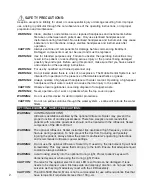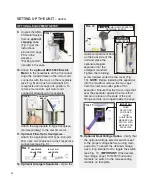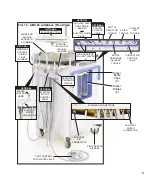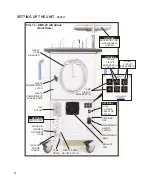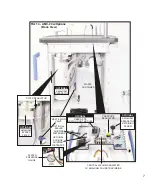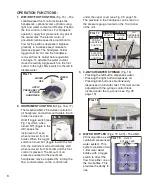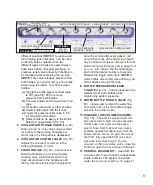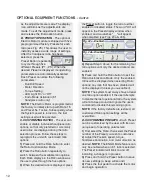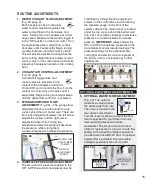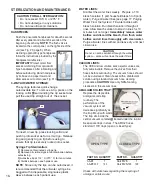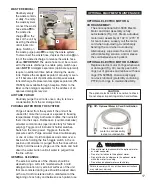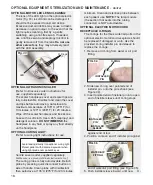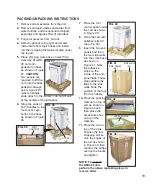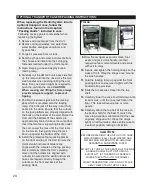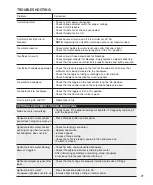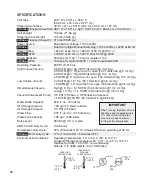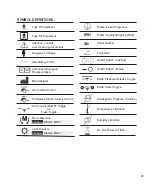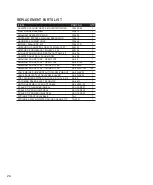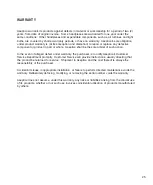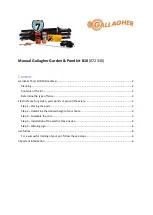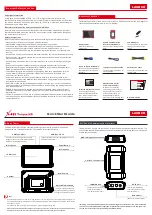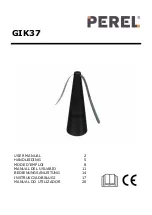
16.
HANDPIECES:
Flush the pneumatic handpieces for about 5 seconds
after every patient and about 20 seconds at the
beginning of each day.
NOTE:
The flush valve is
located on the control panel, on the right side of the
unit (see Fig. 20, page 9). When
sterilizing optional E-type handpieces,
follow the instructions provided by the
handpiece manufacturer.
IMPORTANT!
Protect motor from
excess oil draining from optional E-
Type handpieces. After lubricating and
before autoclaving, stand hand-piece
by its base on a paper towel and
allow excess oil to drain (see Fig. 31).
3-WAY AIR/WATER SYRINGE
:
The syringe features quick-change
autoclavable tips: To remove a tip, press on the
locking collar surrounding the tip socket and
pull the used tip straight out of the socket.
To insert a new tip, press locking collar and
push tip into socket as far as it will go. Release
ring and gently tug on tip before using to
ensure that tip is securely locked into socket.
Syringe Tip Sterilization:
1)
Remove contaminated syringe tip.
2)
Remove all visible signs of contamination before
autoclaving.
3)
Autoclave tip at 132° C (270° F) for ten minutes.
4)
Sterilize between each patient use.
NOTE
: Since only the tips can be autoclaved, it
is recommended that the air/water syringe be
bagged with a disposable, single-use plastic
sleeve between each patient use.
A
A
STERILIZATION AND MAINTENANCE:
WATER LINES:
Disinfect the water lines weekly. Prepare a 1:10
bleach solution (1 part household bleach to 9 parts
water). Purge all water lines (see page 17,
Purging
Water From the System)
. Fill water bottles with
bleach solution. Run bleach solution through all
lines. Allow bleach solution to stand in lines for 10
minutes but no longer:
Immediately remove water
bottles and discard the bleach, then flush water
bottles and all lines thoroughly with clean water.
Purge all water lines with air and leave dry until next
clinical use
.
VACUUM LINES:
The HVE and low volume saliva ejector valves are
fully autoclavable. Remove the valves from their
hoses before autoclaving. The vacuum hoses should
not be autoclaved. Clean hoses with a disinfectant
solution using standard vacuum hose cleaning
procedures.
CAUTION
: Use only NON-foaming
cleansers in the vaccum lines.
AMALGAM SOLIDS TRAP:
Replace the disposable
amalgam solids trap
routinely. The
performance of the
vacuum system will
decrease significantly as
the trap fills up with solids.
The trap sits inside the
central vacuum canister located under the top lid.
Keep spare traps in stock. The AMC-20 uses
standard 1 7/8” traps (open or closed type):
Check with state laws regarding the recycling of
amalgam solids waste.
CAUTION:
Do not run saline solutions through the water
system -- saline will corrode the water filters.
A
PART NO. QUANTITY
PART NO. QUANTITY
AA-29
1
AA-290VS
1
AA-29-100
100
AA-290VS-100 100
OPEN TYPE
CLOSED TYPE
Fig. 31
CAUTION FOR ALL STERILIZATION:
• Do not exceed 135° C or 275° F
• Do not submerge in any solutions
• Do not use ultrasonic cleaners
A

